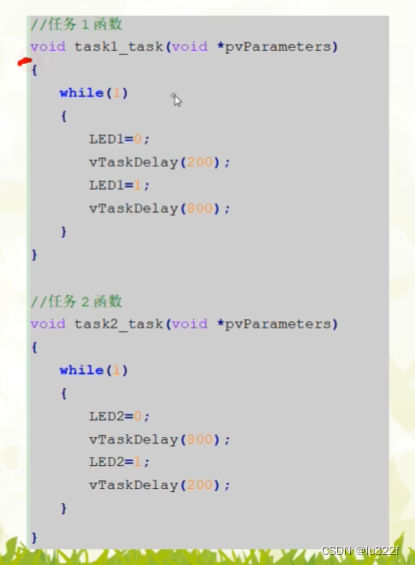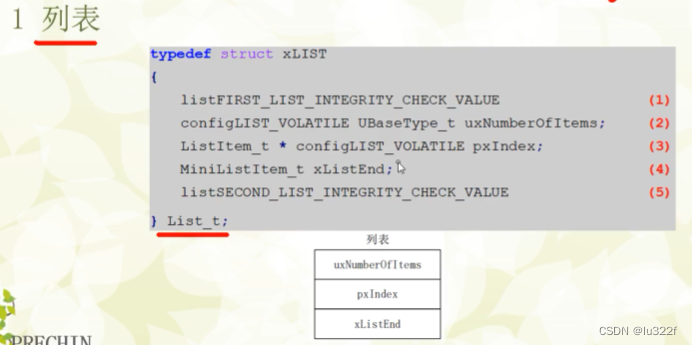1、什么是任务
任务主体:无限循环且不能返回。函数参数是指针,返回值是void(无返回)。/2任务的实现过程:
1.1定义任务栈:
栈:是单片机RAM里面连续的一段内存空间。
要为每个任务分配独立的栈空间。栈空间通常是预定义的全局数组。也可以是动态分配的一段内存空间

1.2定义任务函数:

1.3定义任务控制块:

2、任务的实现过程
2.1列表和列表项定义:
2.1.1列表:

第一个和第五个:用来检查列表的完整性。
第二个:列表项的个数
第三个:当前列表项索引号
第四个:列表当中最后一个列表项,表示列表的结束
2.1.2列表项

第二个:列表项的值
第三个:指向下一个列表项
第四个:指向上一个列表项
第五个:列表项归谁拥有,属于任务的一个任务节点,归任务所有
第六个:指向就绪列表





 本文详细介绍了在单片机中如何实现任务的定义、栈空间管理,以及使用列表数据结构来组织任务,包括列表项的定义、插入、删除和遍历操作的函数实现。
本文详细介绍了在单片机中如何实现任务的定义、栈空间管理,以及使用列表数据结构来组织任务,包括列表项的定义、插入、删除和遍历操作的函数实现。
 最低0.47元/天 解锁文章
最低0.47元/天 解锁文章

















 1390
1390

 被折叠的 条评论
为什么被折叠?
被折叠的 条评论
为什么被折叠?








